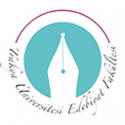S
OUR LECTURER DR. SERAP BOZKURT GÜVENEK'S NEW BOOK HAS BEEN PUBLISHED
Our faculty's Turkish Language and Literature New Turkish Language Department faculty member Dr. Lecturer Serap Bozkurt Güvenek's book titled Semiological Reading of Classical Turkish Poetry Philosophy, prepared together with Prof. Dr. Nazire Erbay, has been published by Paradigma Academy Publications.
This study was initiated with the acceptance of the project proposal titled "Determination of Classical Turkish Poetry Philosophy in the Context of Language Continuity through 'Divans' with the Semiological Method and Determination of Its Reflections in Today's Turkish" within the scope of the TÜBİTAK 1002-A Rapid Support Module, and the topics were expanded by adhering to the project proposal form. The work emerged as a product of a 12-month research, examination and interpretation period (01 April 2024-01 April 2025).
We congratulate our teacher.
About the Work
Painting Classical Turkish poets, while dealing with traditional poetry, have carried out a serious task in their wide geographical networks from imagination to thought, from thought to wisdom. If an inference is to be made about the indispensability of poetry in the Ottoman understanding of art, it is not possible to accept the poets' act of writing as separate from aesthetics, knowledge, wisdom/philosophy or thought. In fact, it is not possible to ignore the existence of the organic connection between poetry and wisdom. In order to reveal the existence of the philosophy of classical Turkish poetry and to reveal the wisdom in poetry, it is essential to investigate the cultural and scientific data specific to the language of poetry and to determine the methodical foundations within traditional understanding and limitations.
In this study, which was conducted with Greimas' semiotic analysis method, the relationship between the subject and the object in classical Turkish poetry was examined in terms of the dimensions of act-competence. The analysis of poetic units showed that the closed structure of the poem could be read by dividing it and that these divisions emerged through linguistic transformations. The formal and functional connections between the images were evaluated, and thus the philosophical position of the poem was determined. As a result, a structural adaptation was given to these products within the tradition, a reading beyond time was carried out without being removed from the space and time it was in, and these selected poetic products were brought to an interdisciplinary ground.


